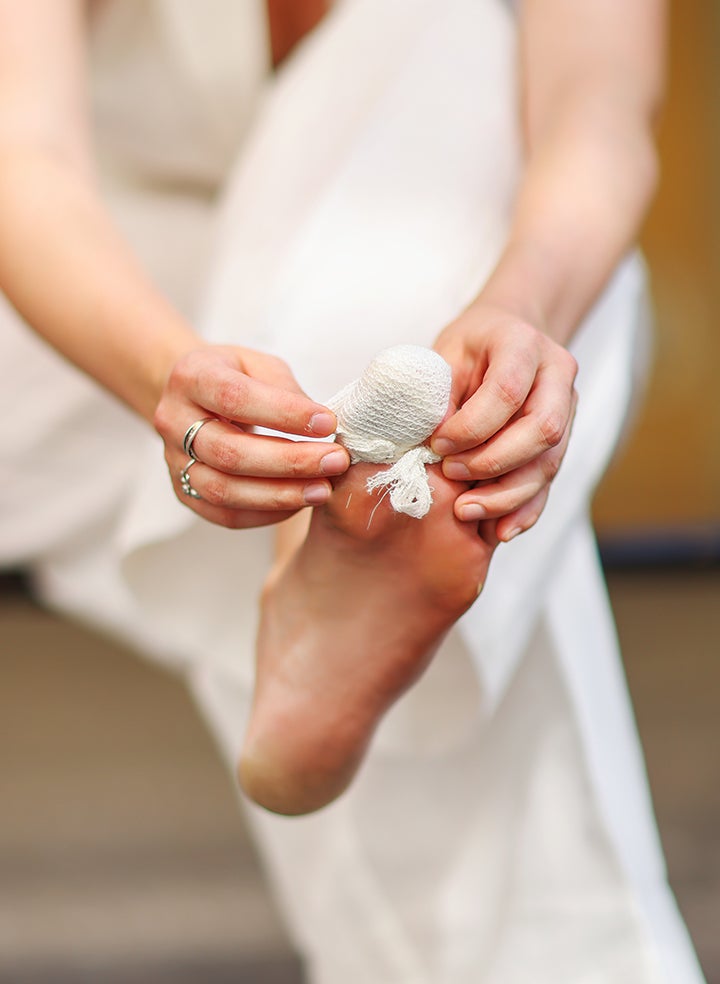Treatment of Ingrown Toenails
Ingrown toenails can be painful, but they are easily treated. Here's what you can do to take care of the issue at home.

An ingrown toenail occurs when one or both sides of your toenail grow into the skin beneath it. This common condition is typically painful and can lead to infection if not treated right away.
What causes ingrown toenails?
There are several reasons that ingrown toenails occur. One of the most common causes is improper toenail trimming. When the toenails are cut too short, or the corners are tapered instead of cut straight, the nail can begin growing into the skin. Ingrown toenails are also commonly caused by wearing shoes that are too tight, pushing against one or more toenails.
Sometimes, ingrown toenails can be caused by genetics, when the toenail is simply too large for the toe. The condition can also be caused by trauma, such as stubbing or dropping a heavy object on the toe.
Can ingrown toenails be prevented?
Except for people with congenital ingrown nails, where the problem is caused by toenails that are disproportionately large, ingrown toenails are best prevented through proper nail trimming practices and by preventing trauma or pressure to the toenails. When trimming your toenails, cut straight across rather than tapering or rounding the corners of the nail. Also, ensure that your nails are not cut shorter than the tip of your toe. Wear shoes that give room for your toes without pressing on them, and keep your feet clean and dry.
What are the symptoms of an ingrown toenail?
The early symptoms of an ingrown toenail can include hardness, redness, swelling, and tenderness of the corner of the nail. If not treated quickly, an infection may develop. An infected ingrown toenail will feel very sore and can lead to complications. A small amount of pus may also be present.
How is an ingrown toenail diagnosed?
Your visit with a health care provider at WellNow will start with a physical exam and full medical history. As part of the physical examination, your physician will examine your affected toe to confirm that an ingrown toenail is the cause of your symptoms.
Can an ingrown toenail be treated at home?
If your ingrown toenail is not infected, you may be able to treat it at home. To do so, soak your foot in warm water 3 to 4 times each day, and keep your foot dry throughout the rest of the day. Make sure to wear shoes that do not press on the toes. If possible, sandals are a good choice of footwear to prevent pressure on the ingrown nail.
Carefully lifting the edge of the ingrown nail and placing cotton or waxed dental floss in the gap between your nail and your skin may help to move the nail into a proper position. To maintain the hygiene of the nail and avoid infection, be sure to replace the cotton or dental floss every day.
To relieve the pain, you may take a painkiller like ibuprofen or acetaminophen. If your symptoms get worse, or you don’t notice any improvement after 2-3 days of treating your ingrown nail at home, visit a physician for treatment.
How can an ingrown toenail be treated?
If your ingrown toenail is infected or does not improve with home treatment, you should visit a health care provider. At WellNow Urgent Care, this condition can be treated through a partial ingrown toenail removal, done by a surgical procedure called a wedge resection.
In a wedge resection, your medical provider will first numb the affected toe using a local anesthetic. The provider will then surgically remove the ingrown part of the nail.
As you heal, you may be prescribed oral antibiotics to help fight off or prevent infection. Your provider may also recommend a preventative procedure to reduce the probability of reoccurrence.
Ingrown toenails can be painful and can get worse without treatment, particularly when the toenail becomes infected. If you’re concerned about an ingrown toenail, check in online or walk into a WellNow clinic near you to be seen by one of our skilled health care providers at your convenience.
